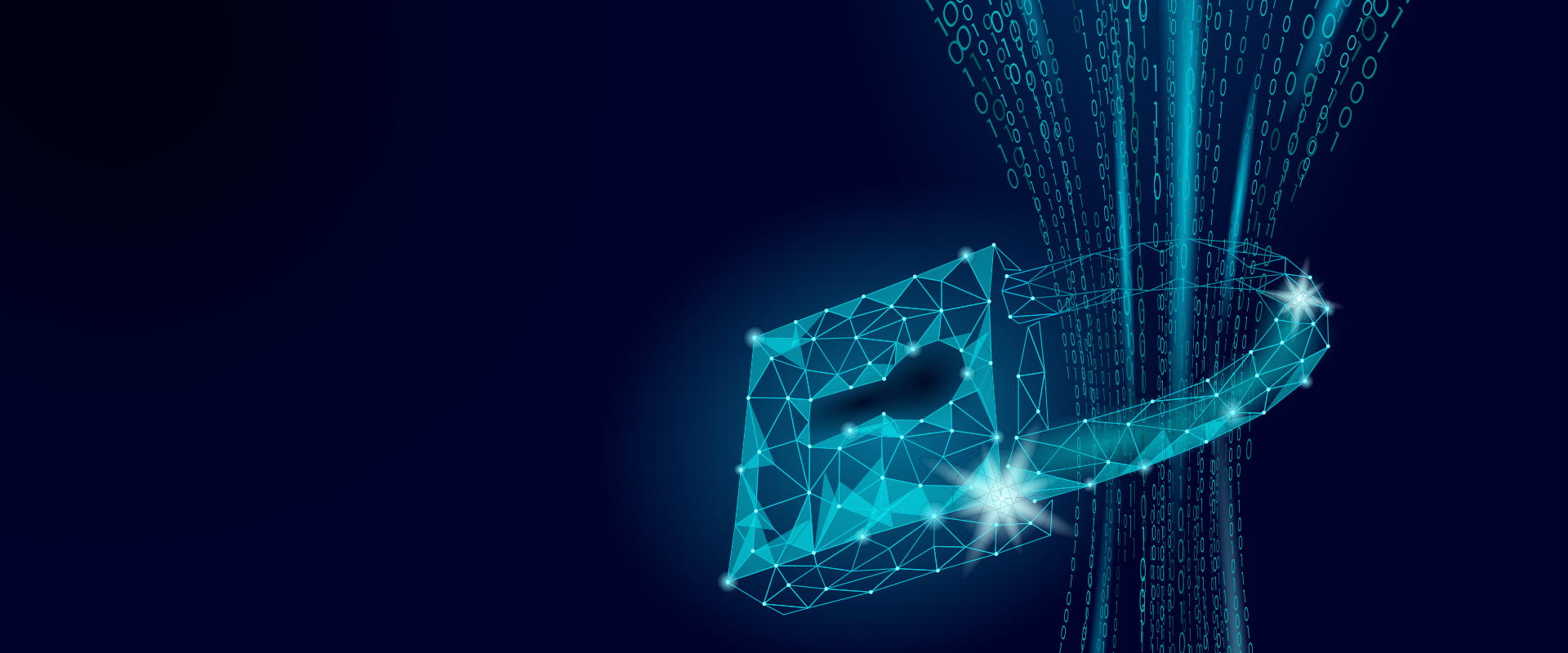Protecting Your Organisations Data
Government
How much is your data worth and can you protect it?
The excerpt will automatically add to here. Do not edit this block.
Protecting your valuable data
Data is a valuable currency and the ultimate goal for cybercriminals. If you own an organisation’s data and intellectual property, you can bring the business to its knees. By breaching the company’s defences and locking up its data, cybercriminals can exploit businesses for a hefty ransom to retrieve their data and avoid the financial and reputational damage that goes along with being breached.
It’s not only businesses that are at risk of financial exploitation. An individual employee’s identity alone is valued at around US$1,200[1]. However, that’s just the tip of the iceberg considering that a successful cyberattack could result in:
- Appropriation of resources: cybercriminals often use vulnerabilities in the network to infiltrate systems and use information that can be repurposed to create things of value, such as scams. By co-opting organisational data, such as internal email signatures, cyberattackers can create phishing emails to exploit other victims using your organisation as a proxy.
- Clients and suppliers transferring funds to bogus accounts: phishing and spear phishing attacks can exploit your email information to expose your customers to vulnerabilities. This can lead to customers sharing details and finances with cybercriminals using fake accounts and posing as employees of your company.
- Impact to financial credentials: cybercriminals can access company credit cards and bank accounts, which can cause financial losses and damage.
- Theft of intellectual property: cyberattackers that infiltrate your system or deploy ransomware can access sensitive data and information from within your organisation. This can be used to blackmail your organisation, or be sold through the black market, for monetary gain.
- Ransom demands: armed with sensitive company and customer information, cybercriminals can further exploit organisations by requesting payment for the return of locked up data.
- Company information used for unlawful purposes: in addition to financial exploitation, criminals can also exploit confidential information for other means, such as corporate espionage. This can involve company secrets or intellectual property being sold to other competing organisations or used for other illegal activities such as fraud.
It’s essential that organisations invest wisely in tools and technologies to keep their valuable information safe from cybercriminals. To protect company information, organisations must integrate processes like advanced email threat protection, multifactor authentication and employee cybersecurity training into their operations. They should also invest in network security tools, such as perimeter security, to provide the best defence possible for the network. However, there is a fine balance between investing in the right level of protection for your organisation, and over-investing in solutions that may not deliver the best security advantage for your business.
Cyclone has identified four key capabilities your cybersecurity solution must deliver to best protect your organisation and its valuable information in our latest checklist. For more information, download your copy today or contact the Cyclone expert team for a personalised consultation on how best to protect your organisation
[1] https://www.top10vpn.com/research/investigations/dark-web-market-price-index-2019-us-edition/
Subscribe to our newsletter
Subscribe to Cyclone news to keep up to date with new technology, current trends and future thinking.
search articles
Top Three Cyberthreats For NZ Organisations
Government
What are the top three cyberthreats and how can you prevent them?
The excerpt will automatically add to here. Do not edit this block.
Preventing Cyberthreats
There has been a significant increase in targeted cyberattacks on organisations since COVID-19, and these attacks are unlikely to subside any time soon. In fact, the rapid growth of smart devices used to access organisational tools and information, and the prevalence of employees working remotely, will only broaden the attack surface for cybercriminals in future.
Today, there are thousands of cyberthreats that pose a risk to businesses. With a cyberattack occurring every 39 seconds on average it’s a matter of when, not if, your organisation will be targeted by cybercriminals. [1] There are three key threats that pose the greatest risk to organisations today:

- Email based threats and exploitation
Cybercriminals have been using email to exploit victims for a long time. However, gone are the days when you could easily identify a financial scam after receiving an email from a ‘prince’ in a foreign country. Cybercriminals have become more sophisticated as our technologies advance, and the ways in which they exploit victims has changed. Some of the most common attacks include:
- Phishing: phishing is possibly the most common form of cyberattack. Phishing emails appear to come from a reputable source, and typically include requests to click a link or open an attachment.
- Spear phishing: a more sophisticated form of phishing, spear phishing is more targeted and may appear to come from someone within the target’s own network, making it more likely that the recipient will fall for the scam.
- Ransomware: a form of malware that encrypts files, ransomware is commonly sent via phishing emails and downloads to the victim’s device once opened.
As these attacks are common, there are reasonably simple ways you can defend your organisation. First, it’s important to install tools that protect the organisation and prevent data loss, such as advanced email threat protection software. It’s also essential to invest in education for your employees to ensure they understand cyber risks and how to identify scams and threats. Consider conducting regular training sessions with all employees and sending regular mock phishing emails to workers to keep them vigilant against threats.
- Hacking
Hackers will typically access your organisation’s network via ransomware or exploiting security vulnerabilities in your system. This opens your organisation to great financial and reputational risk, as well as potentially exposing your customers and partners to risks as well. Having multiple layers of defence is the most effective way to strengthen your organisation’s security posture and reduce the risk of failure in network security. Multiple layers of protection mean that, if one layer fails, another can sure up the organisation’s security. This involves investing in technologies like firewall and network protection to provide a privacy and security environment that both your employees and customers can trust.
- Data leakage
The rise of remote-working practices in 2020 has greatly increased the risk that employees pose to organisational security. The prolific use of external smart devices that need encryption to connect to organisational networks have increased the attack surface that can be exploited by cybercriminals, as well as the number of potential points of entry that can be breached. To defend against data leakage through risky access points, it’s essential to invest in multifactor authentication to protect devices and applications. The IT team also needs a comprehensive, up-to-date list of all devices connected to the organisation’s network.
Identifying the right tools and technologies to protect your organisation from a breach and defend it against cyberattack can be complicated. There are four key capabilities to look for in a cybersecurity solution. For more information, download Cyclone’s free checklist today, or contact the Cyclone expert team to discuss the safest and most cost-effective cybersecurity approach for your organisation.
[1] https://eng.umd.edu/news/story/study-hackers-attack-every-39-seconds
Subscribe to our newsletter
Subscribe to Cyclone news to keep up to date with new technology, current trends and future thinking.
search articles
Search
Recent Posts
- Independent Schools of New Zealand
- Independent Schools of New Zealand
- The Impact of Generative AI in New Zealand Schools
- eduTech 22. Reflections from a fantastic few days.
- Minecraft in the Classroom
- Cyclone Computers Wins 73.3M Deal
- A tale of two lockdowns
- Not if, but when. Ransomware on the rise.
- It’s ugly out there, people. Good security starts with you.
- Our Top 6 Security Recommendations
- Protecting Your Organisations Data
- Top Three Cyberthreats For NZ Organisations
- A-Z of Classroom Technology for 2020
- 3 Ways to Ensure Data Security in Schools
- 7 Ways Teachers Can Leverage VR in the Classroom
- Mobile Device Managers
- Microsoft Power Apps
Recent Posts
- Independent Schools of New Zealand
- Independent Schools of New Zealand
- The Impact of Generative AI in New Zealand Schools
- eduTech 22. Reflections from a fantastic few days.
- Minecraft in the Classroom
- Cyclone Computers Wins 73.3M Deal
- A tale of two lockdowns
- Not if, but when. Ransomware on the rise.
- It’s ugly out there, people. Good security starts with you.
- Our Top 6 Security Recommendations
- Protecting Your Organisations Data
- Top Three Cyberthreats For NZ Organisations
- A-Z of Classroom Technology for 2020
- 3 Ways to Ensure Data Security in Schools
- 7 Ways Teachers Can Leverage VR in the Classroom
- Mobile Device Managers
- Microsoft Power Apps
- 1
- 2



